STEBBING connections down-under
DNA results have once more confirmed our newest cousins from Melbourne Australia, linked once more to the Walker/Boyle/Pinkerton family from Ayrshire in Scotland. Thank you Margaret Stebbing and daughter Lisa for your help in compiling this page. This Stebbing line had its origins in Suffolk in England 1750  On to Stephney in London for three generations from 1780-1834 where Charles James Stebbing decided on moving to Australia where the Gold Rush had begun. His son Arthur was born in New Zealand. Then back on to Victoria where Arthur was born in 1908. Â
Mary Pinkerton was born c 1780 in Irvine in Ayrshire.  She was the daughter of. James Pinkerton and Agnes Thomson.  She married James Walker and they had at least nine children. The offspring of this line were to settle in many corners of the Globe and many of them in Australia and some in Canada. It is unusual for so many of their descendants to be interested in genealogy and strange how I have met up with different cousins again after two centuries.
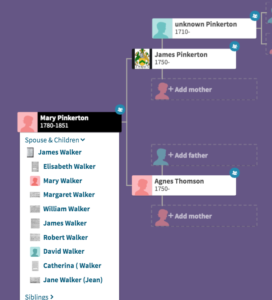
The children of James Walker and Mary Pinkerton. The Stebbing line comes from daughter Elizabeth.
THE STEBBING BRANCH From Ayrshire to Melbourne
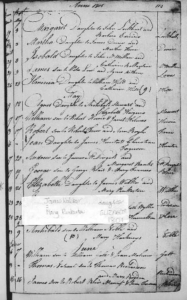
Baptism of Elizabeth Walker – she was to Marry David Reid.
- LINE 1. Our branch of the Walkers had settled in and around the Paisley area of Scotland drifting not far to Irvine and settling around the area which was rich in minerals and had many mines. There was plenty of work around for those who were able to do so. Elizabeth’s parents were James Walker 1779-1856 and Mary Pinkerton 1780-1851.Â
- LINE 2. Elizabeth Walker was born in 1801 and died in 1879 in Dalry in Ayrshire. It was in the year 1811 that she married William Reid 1792-1851. Elizabeth Walker being the DNA Link to our own family. The Stebbing family are direct descendants of this branch.Â
- LINE 3. David Reid was born in 1827 in Irvine, Ayrshire, he was the fourth of eight children.  John born 1821, William born 1823, James born 1827-1861, David 1827-1870, Elizabeth born 1828, Jane 1830, Mary 1832 and another William born 1834.
David REID married Martha BROWN 1827-1883 on 1 January 1847 in Dalry, Ayrshire, Scotland. Martha was also from Dalry.  David and Martha had two children, both girls born in Dalry, Ayrshire, Scotland, Elizabeth Reid 1847-1913  and Jane Reid in 1849-1929. Their sister Margaret Reid 1857 -1891 was born in Australia.  Unlike David’s brother John, who had already ventured to America in search of his fortune, the Gold discoveries in Australia tempted David towards a longer journey away from Irvine. The family joined thousands of gold seekers when they embarked from Liverpool on 20th March 1854 on the ship ‘Persia’ to Melbourne, Australia. Melbourne has been described as an ‘instant’ city.
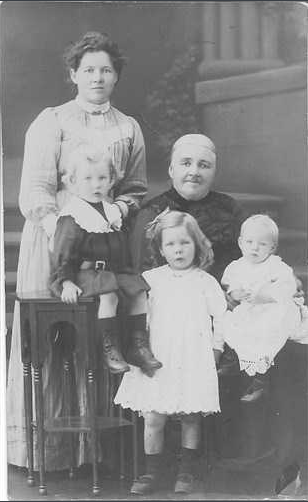
Elizabeth Reid [Parker] with daughter Margaret Parker [Banks Younger] and grandchildren Archibald, Linda and Vera. Taken 1901.
- Migration was essential for many people to survive the Industrial age and David’s marriage to Martha Brown in 1847 reveals the first steps he made. They were married in Martha’s home town of Dalry in Ayrshire and the 1851 census shows he was a miner in the Dalry coal mines.
- Â
-
Â
 Coalmining in Scotland and this area in particular was booming at this time. A good training ground for many men who left to seek their fortunes in Gold in the Americas and Australia.
Coal was the fuel that powered the Industrial Revolution. The reliance on steam engines meant a huge increase in the demand for coal and the men women and children who mined it, particularly so in the mining areas of Scotland.Â
For centuries, people in Scotland and Britain had made do with charcoal if they needed a cheap and easy to way to acquire fuel. What ‘industry’ that existed before 1700, did use coal but it came from coal mines that were near to the surface and the coal was relatively easy to get to. Two types of mines existed: drift mines and bell pits. Both were small scale coal mines and the coal which came from these type of pits was used locally in homes and local industry.
It was a hard profession where many were killed. Children as young as five were also working in the profession as their small agile bones could get into small cavities.Â
-  The family joined thousands of gold seekers when they embarked from Liverpool on 20th March 1854 on the ship ‘Persia’ to Melbourne, Australia. Melbourne has been described as an ‘instant’ city.
Â
She shares this definition with other cities that developed at an astounding rate in the 1800s. Cities like Johannesburg and San Francisco. Gold was the motivation for the huge migration from Britain and other European destinations to this distant location. Thousands made their journey since the first of the European settlers arrived in 1788. Many came seeking a new home.  Some fled from the ravages of war, hunger and religious persecution or political repressions.  Others were lured by a sense of adventure or by the prospect of a new biginning, owning land, making money or perhaps being reunited with other family members who had been sent out before.
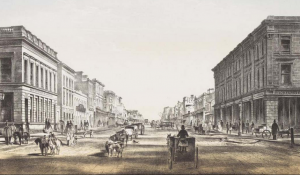
Elizabeth Street in Melbourne in the 1860s.
By the time the Reid’s left Scotland in 1854 the journey would have probably been by an auxillary steamer, which used a combination of steam and sail. However steam technology was still in its infancy then and they had to rely on the great winds to help them along. Whichever way was chosen the journey would not have been pleasant. Many died on route. They would have been buried at sea wrapped in canvas and loaded down with weights from the steamships. Of course disease was rife and life not pleasant for either sailors or passengers.
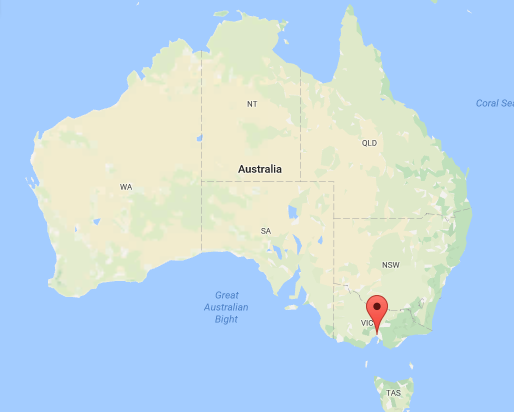
Map showing the location of Melbourne, Australia. For a number of years the Gold output which came out of Melbourne was larger than any other place in the world except for California.The gold exported to Britain in the 1850s paid all her foreign debts and helped lay the foundation of her enormous commercial expansion in the latter part of the 1800s.
When The ‘Persia finally anchored it was one of many crowding Port Phillip Bay in 1854. Small boats ferried immigrants and their luggage to the docks of Melbourne.Â
Although many women and children stayed in Melbourne whilst their men tried their luck in the Victorian Goldfields, the Reid family were together in Ballarat in 1857 when their third and last child Margaret was born. David Reid died there at the tender age of 43 in 1870.Â
- THE FATES OF THE THREE DAUGHTERS
- Eldest daughter Elizabeth or Betsy Reid 1847-1913. She married ten years after the family’s arrival in 1864. Her husband was Archibald Parker who was also a Scot. 1826-1894.  They had ten children who had varying lifespans
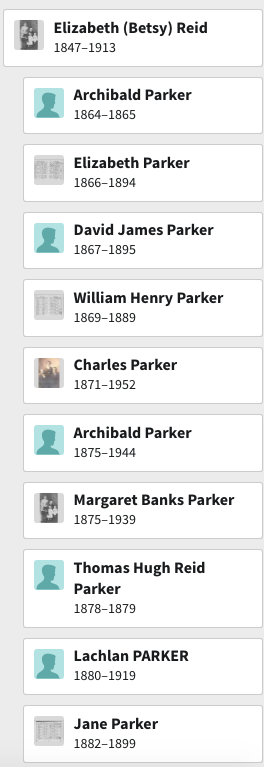 4. LINE 4
4. LINE 4
 SECOND DAUGHTER Jane Mary Reid 1849-1929 married in 1868 in the Goldfields town of Stawell, located in the Western district of Victoria. Her husband was an Englishman William Wells 1837-1909. They lived her for the remainder of their lives and in doing so became a strong part of the community. Jane was a nurse and William continued working in the Mines. William was a member of the Masonic Lodge and Jane was devoted to the Salvation Army. They were a pillar of their community. They had ten children with six surviving to marry and have their own families. Their son George Hawthorn Wells was born in 1878 and is Margaret Stebbing’s Grandfather.
-
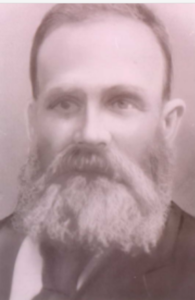
William Wells husband of Jane Mary Reid
Â
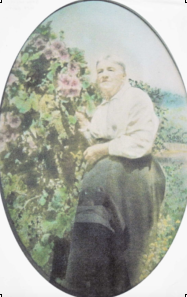
Jane was a nurse by profession. This is a photograph of her in later life
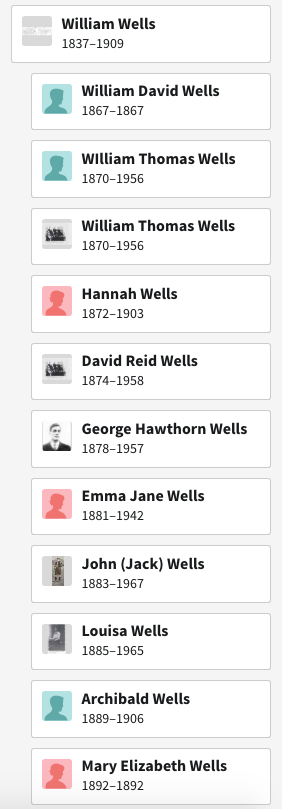 Their home in Stawell was located on the Western Highway approximately 240 km north-west of Melbourne. It is the western-most part of the Victorian Goldfields, alluvial gold having been discovered there by William McLachlan at Pleasant Creekin in 1853.  The Quartz Reefs became a stable goldfield and companies were formed to purchase the machinery needed and in return it employed many miners.
Their home in Stawell was located on the Western Highway approximately 240 km north-west of Melbourne. It is the western-most part of the Victorian Goldfields, alluvial gold having been discovered there by William McLachlan at Pleasant Creekin in 1853.  The Quartz Reefs became a stable goldfield and companies were formed to purchase the machinery needed and in return it employed many miners.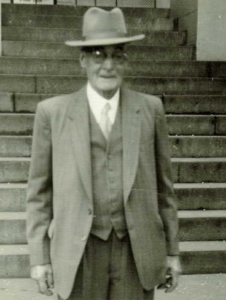
Although many women and children who had emigrated stayed in Melbourne whilst their men tried their luck in the Victorian Goldfields, the Reid family were together in Ballarat when Margaret was born. David died there at the age of 43 years in 1870 and despite the instant riches found by some gold seekers life in these rural areas was harsh for most people. Folks died young from occupational diseases, accidents and infectious diseases. Also with only a few police around and basic town planning these frontier communities could be dangerous and under resourced for families to live. It was only through family, friends and community bonds that people actually started to thrive in these conditionsÂ
DAUGHTER NO. 3.Â
- As Martha Brown Reid was now the Head of the family and it was she who gave her permission for their youngest daughter Margaret Catherine Reid 1857-1891 to marry in 1877.  Her husband was John Hughes 1842-1882. He was a Welshman and would have already have knowledge of the mines in Wales.

Marriage between Margaret Reid and John Hughes
Â
- THREE CHILDREN
- Elizabeth Ellen Hughes 1879-1939.
- David John Hughes 1880-1880
- Albert Edward Hughes 1882-1970Â
Then her husband John died in 1882. She remarried the year after to Alfred Blundell 1863-1956. Their children were
- Alfred George Blundell 1884-1885
- Florence Jane Blundell 1890-1979Â
Â
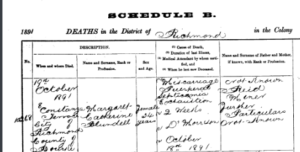
She dies age 24 of complications from miscarriage. Very sad. Â
-
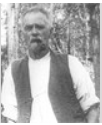
Alfred in later life. It seems he was a colourful character with a few run ins with the laws.
Â
Alfred re-married the following year.
Â
5. LINE 5
-
GEORGE HAWTHORN WELLS 1878-1957.  George married MARY MARTHA HELEN QUARRELL 1880-1954. Â
Â
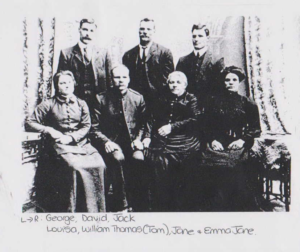
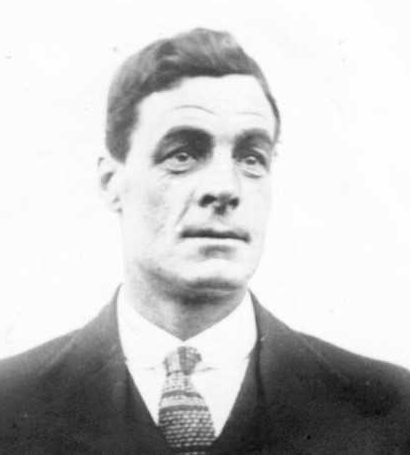
George in later life
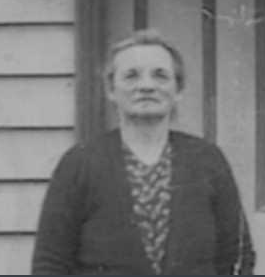
Mary Martha Helen Quarrell was one of 8 children. Her Dad James was born in Hackney in London in 1856-1911. Her mum was Emily Butters who was born in Victoria, NSW, in 1862-1934
George Wells married Mary Martha Helen Quarrell in 1901. Â
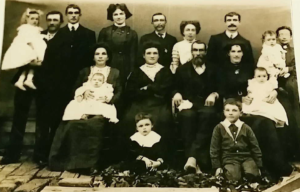
The Quarrell family. Alfred and Emily had 8 children. Not sure who is who here
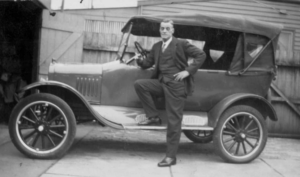
George showing off his new Motor Car
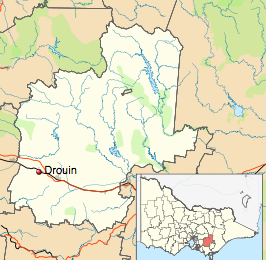
Map of the area showing Drouin. It in Baw Baw.
George and Mary couple were native born Australians and this was the year of Federation. In 1901 all the States in Australia became part of the Commonwealth of Australia which consolidated the nation’s sense of independence from Britain. Mary’s family had settled in Pitfield Plains, near Ballarat, and she later inherited land in the area. George and Mary brought up their four children in the inner city Melbourne suburb of Brunswick, but were still linked to Pitfield through her family and the land. Their second child Olive married Albert Harris in 1936 and during WW2 lived there with their children and her parents, manning the telephone exchange and Post Office. In the 1950s Olive and Albert were living east of Melbourne, in the farming district of Gippsland with their two daughters Dorothy and Margaret. It is also where George and Mary spent their last years on the family Dairy Farm near Drouin.
- Four children
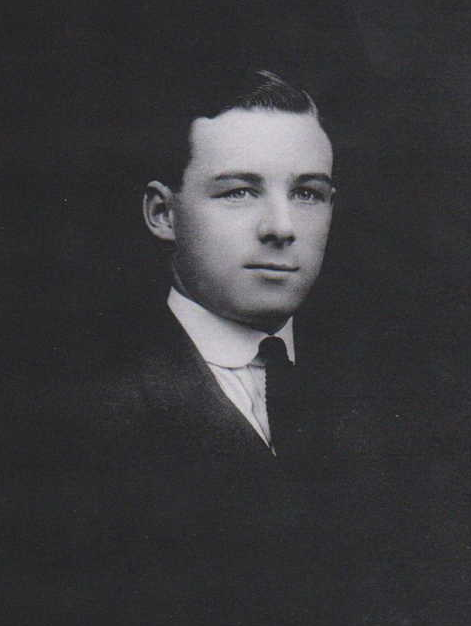
William George Wells was born in 1902. He married Gladys Clark.
Â
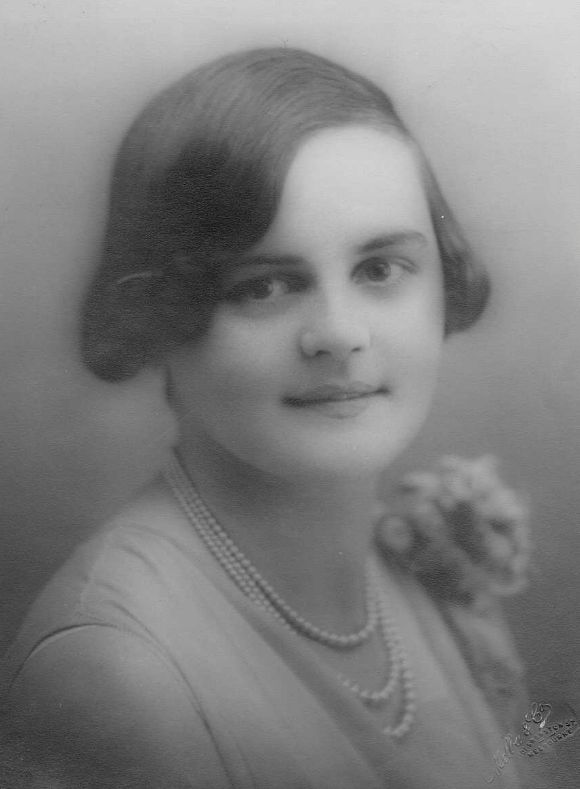
Edith Muriel Wells. She was born on 17th November 1907 in Stawell. She married Silvester Farrell Frances Boardman.
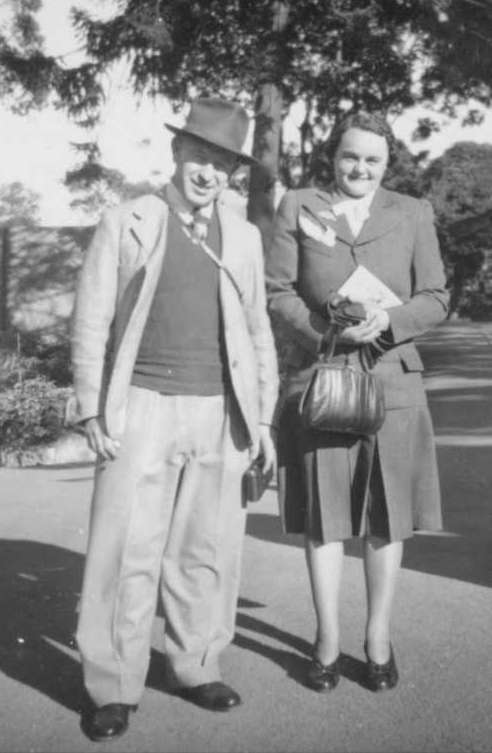
The couple in later life. They had two children Ronald and Allan.  Edith died in the year 1975 and Silvester 1984.

Olive Wells on her Wedding Day – with the names of everyone written around the side. Fantastic. Olive Wells  was born on 14th December 1906 in Stawell. She married Albert Alexander Harris 1901-1982. Olive died 3rd August 1998 in Hornsby, New South Wales.
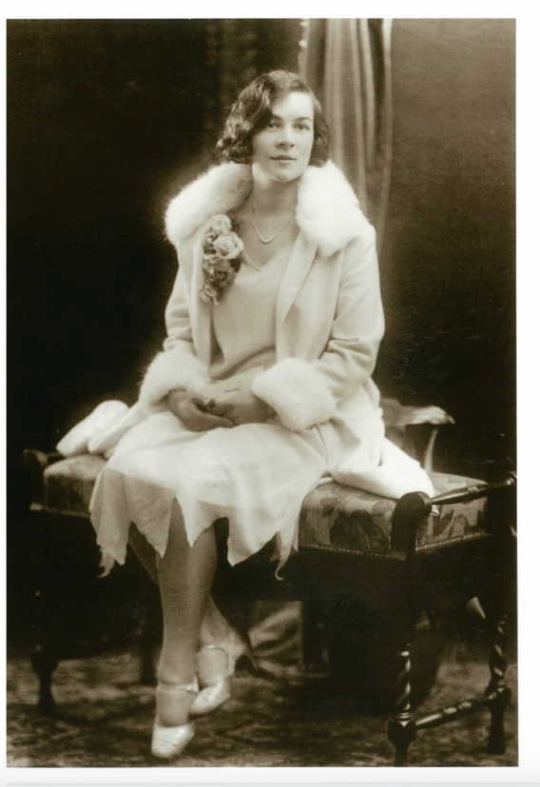
Olive – In her prime
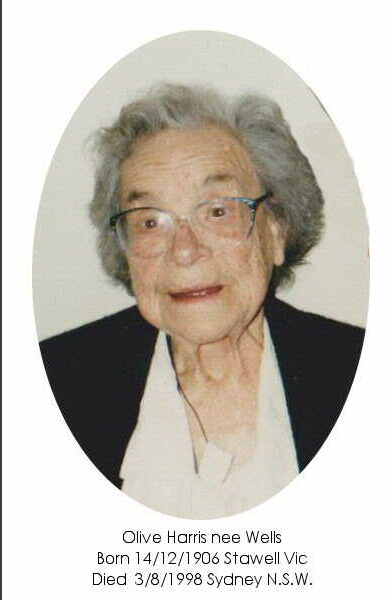
Â
One of their children was Margaret Harris.  Margaret married Rodger Stebbing in the year 1967 in Melbourne. They in turn had children Lisa, Jennifer and Andrew Stebbing.  Andrew has a son called William.
- Â
Â
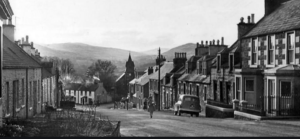
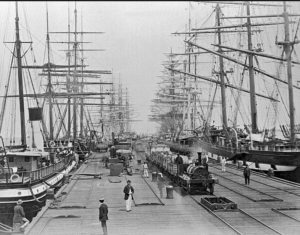
Leave a Reply